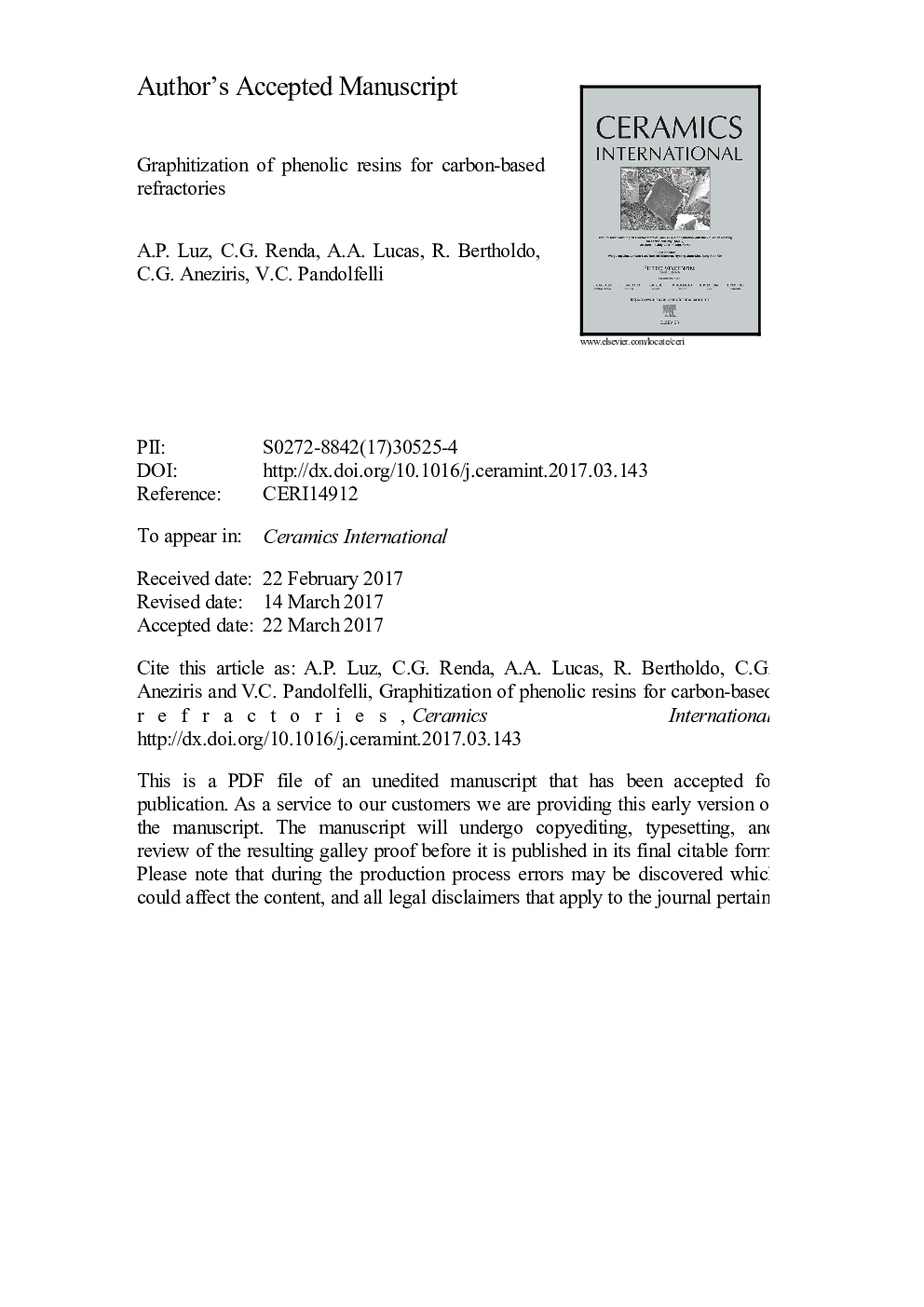| Article ID | Journal | Published Year | Pages | File Type |
|---|---|---|---|---|
| 5437736 | Ceramics International | 2017 | 43 Pages |
Abstract
The chemical resistance and thermo-mechanical properties of refractories bonded with resole or novolak resins depend on the presence of crystalline carbon phases (preferentially with features close to graphite ones) in their compositions. Although thermosetting resins are commonly classified as non-graphitizing carbon sources, many efforts have been made in recent years in order to find effective routes to induce the in situ graphitization of such components in refractory products during service. This work evaluates the role of processing parameters (mixing, curing and firing temperature) and additives (ferrocene, boric acid and exfoliated graphite) in the graphitization process of two commercial resins (resole and novolak) and a synthesized one (modified-novolak). X-ray diffraction, Raman spectroscopy and thermogravimetric analyses were carried out to identify the microstructural evolution of the compositions. According to the results, carbon graphitization was already detected after firing the samples at 1000 °C for 5 h under reducing atmosphere. Ferrocene addition favored a more effective graphitization of the selected resins, but H3BO3 also induced the rearrangement of the carbon derived from the commercial novolak product. The mixing and curing procedures used when preparing the compositions proved to be very important steps as they affected, to a greater extent, the resulting graphitization degree of the fired samples.
Keywords
Related Topics
Physical Sciences and Engineering
Materials Science
Ceramics and Composites
Authors
A.P. Luz, C.G. Renda, A.A. Lucas, R. Bertholdo, C.G. Aneziris, V.C. Pandolfelli,
